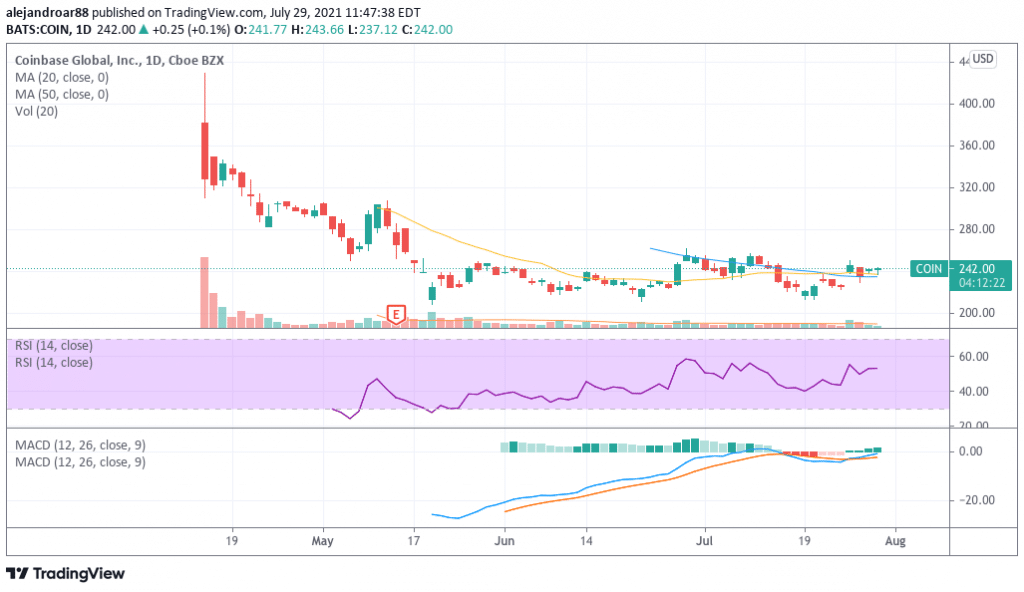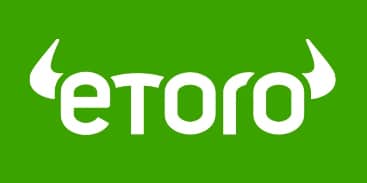Robinhood IPO Prediction – An Analysis of Some Relevant Peers
Please note that we are not authorised to provide any investment advice. The content on this page is for information purposes only.
Last night Robinhood finally priced its shares only hours before going public at $38 apiece, which was the low end of initial price estimates indicated by bankers. A total of 55 million shares are being sold by the firm including 2.625 million from insiders while underwriters will have the option to sell another 5.5 million shares at the IPO price.
Total capital raised by the company as a result of this IPO would be $1.9 billion which will be used for working capital, capital expenditures, and other general corporate purposes including the completion of projects aimed to further fuel the company’s financial performance.
Now that we are only minutes away from being able to buy some HOOD shares, what can be expected from this widely-anticipated IPO? The following article compares the valuation assigned to a recently acquired brokerage firm to that given to Robinhood today while it also analyzes the performance of another similar IPO that took place recently to draft plausible scenarios for HOOD’s short-term price action.
Comparing Robinhood with a close peer
A good place to start when valuing a company is to look at its peers. Since Robinhood is not the only brokerage firm in the United States, we could look at the valuation of other similar companies to establish comparables for valuing HOOD.
One plausible peer that we could use to establish comparables for Robinhood is E*Trade – a brokerage firm that was recently acquired by Morgan Stanley for $13 billion. This broker focused primarily on serving retail traders in the United States.
Here’s a quick summary of the most relevant numbers of E*Trade:
- 2020 Revenues (e): $1.2 billion.
- Number of retail accounts: 83 million.
- Total Customer Assets (Retail only): $417 billion.
- 2020 net income (e): $800 million.
- Debt-to-equity ratio: 0.21
- Average Revenue per User (ARPU) (*): $110
- Average 3Y Return on Equity (ROE): 14%.
(e): These estimates were made using a simple run rate of the firm’s last two reported quarters in 2020 (Q1 & Q2).
(*): This estimate assumes that 53% percent of E*Trade’s revenues came from retail investors based on the percentage of assets under custody for this segment.
Now, here’s a breakdown of the same metrics for Robinhood as per its S-1 filing:
- 2020 Revenues (a): $720 million.
- Number of retail accounts: 18 million.
- Total Customer Assets (Retail only): $62 billion.
- 2020 net income (a): $7.4 million.
- Debt-to-equity ratio: 0
- Average Revenue per User (ARPU) (*): $109
- Average 3Y Return on Equity (ROE):
At the IPO price of $38 per share, Robinhood is being valued at $32 billion or 2.5 times the price paid by Morgan Stanley for E*Trade.
A comparison of the two brokerage firms shows remarkable differences in terms of their fundamentals including the following:
- E*Trade had 8 times the amount of assets under custody by Robinhood.
- E*Trade’s net income was 108 times higher than that of Robinhood by the end of 2020.
- E*Trade’s portfolio of services was more diversified as it included corporate and advisory services.
- Robinhood has three times the number of retail accounts than E*Trade yet average assets under custody per user for Robinhood were $3,444 while E*Trade’s were $71,526.
What this comparison seems to show is that the market is valuing Robinhood based on the firm’s higher number of accounts while not considering at all the firm’s earnings generation capacity, which is fairly poor compared to that of E*Trade.
If we assume that 53% of the revenues that came from E*Trade came from retail accounts (based on the amount of assets under custody for this segment), that would result in an estimated value of $6.9 billion for the firm’s retail unit.
Therefore, if the market is solely focusing on the number of accounts that Robinhood has – which is three times the number that E*Trade had – that would result in a valuation slightly below $21 billion for Robinhood based on a comparison with this peer.
Another Coinbase (COIN) situation?

Another interesting case study that comes to mind ahead of Robinhood’s IPO is that of Coinbase (COIN), the cryptocurrency exchange that went public in April this year and whose price has suffered a severe decline from an intraday high of $429.5 per share during its first day of trading to $243.6 per share today for a 43% loss.
The problem with Coinbase was that the market was pricing that cryptocurrency prices would remain at the same level or higher than they were back then in the nearest future as higher crypto prices were the primary driver for the firm’s remarkable performance during the first quarter of 2021.
However, cryptocurrency prices collapsed shortly afterward and that resulted in a severe drop in the share price.
In the case of Robinhood, the market is probably being optimistic about the firm’s ability to keep monetizing its large customer base, possibly aiming for the continuous increase of HOOD’s average revenues per user – which are already at the same level as those of E*Trade despite Robinhood not offering the same portfolio of services as its peer did.
If Robinhood incorporates new services such as a robo-advisor, corporate solutions, and other similar offerings, the firm’s ARPU will likely rise and that could justify its higher valuation. That said, the firm still has to assure investors that it can deliver on those promises and any developments on that front will probably have a tremendous effect on the stock price moving forward.
Bottom line
Robinhood’s $32 billion IPO valuation seems stretched when the firm is compared with a recently acquired peer. That said, the company has significant growth opportunities ahead that open up the possibility of further upside potential for the stock in the next years if and only if the management successfully expands the business.
For the time being, the firm’s profitability is very disappointing compared to that displayed by E*Trade and that could weigh on the share price and will likely produce significant volatility in the price action moving forward.






